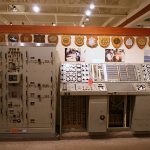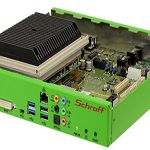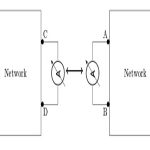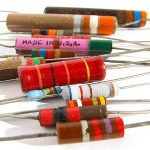Damping of the oscillatory system is the effect of preventing or restraining or reducing its oscillations gradually with time. The damping ratio in physical systems is produced by the dissipation of stored energy in the oscillation. It is the restraining or decaying of vibratory motions like mechanical oscillations, noise, and alternating currents in electrical and electronic systems by dissipating energy. Examples of damping are; viscous drag in mechanical systems, resistance in electronic … [Read more...]
What is a Differential Amplifier : Design & Its Applications
The differential amplifier is a basic operational amplifier that consists of three basic terminals. Among those, two are of input that is inverting and the non-inverting terminals. Hence, these amplifiers are the circuits that can perform various operations mainly it is the difference between the two applied input signals. The most important factor gain is applicable here for both the applied input signals. Hence this concept of application leads to the elimination of the noise quantity from … [Read more...]
What is a Form Factor & Its Importance
Generally, form factors are related to different electronic devices like motherboards, cell phones, etc. For motherboard, it can be referred to as one kind of hardware peripherals & its structure. So motherboard form factors are micro-ATX & ATX. Similarly, for mobile phones, it is referred to as the complete shape, design of the phone like the traditional candy bar shape, which changes from the slide & flip form factors. At present, most of the phones are available with touch … [Read more...]
What is Reciprocity Theorem : Theory & Its Verification
In electronics and electrical engineering, many network theorems are used to solve complex and multi-loop circuits. The network theorem is used in the analysis of AC networks. They are classified into various types such as Thevenin's theorem, Superposition theorem, Norton's theorem, maximum power transfer theorem, Millman's theorem, Substitution theorem, and reciprocity theorem. This article describes the reciprocity theorem, which is used in both circuit theory and field theory. Since the … [Read more...]
What is an Ultrasonic Transducer : Working & Its Applications
The number of waves or signals that occur in a fixed time interval specifies the frequency and it is measured in the units of Hertz (Hz). Based on the values of frequency, the frequency range is varied and it is determined. When the sound produced is at a higher level than the human hearing range, then it is said to be ultrasound, with a frequency spectrum of over 20KHz. The device that can generate or sense the ultrasound is called an ultrasonic transducer and ultrasonic sensor. The various … [Read more...]
What is PMMC Instrument : Construction & Its Working
The various electrical machines and panels are fixed onboard to sail the ship from one place to another place very efficiently and safely. To avoid the breakdown during sailing, these machines require regular maintenance. That means, measuring electrical quantities like resistance, voltage, and current will help to analyze the proper condition of the electrical machine. For this measurement, different instruments are used like a PMMC instrument. PMMC instruments are one of the simple and … [Read more...]
What is Hot Wire Anemometer & Its Working
A hot wire anemometer is one kind of device, used to measure the speed and direction of the wind. These are used as wind speed instruments in the meteorology sector. In the 15th century, Leon Battista Alberti invented the first mechanical anemometer. After several modifications, John Thomas Romney Robinson in 1846, improved the design by using cups and mechanical wheels. Anemometers are classified into two types like pressure type and velocity type. The hot wire anemometers are the velocity … [Read more...]
What is a Capacitive Transducer & Its Working
A capacitive transducer is one kind of device, used to change the energy from one form to another. Generally, transducers are frequently used at the boundaries of control systems, measurement, & automation, wherever electrical signals are changed from different physical quantities like force, energy, light, torque, position, motion, etc. There are two kinds of transducers like electrical and mechanical. Electrical transducers convert the physical quantities to electrical whereas … [Read more...]
What is a Freewheeling Diode : Circuit & Its Working
In different circuits, a switching element switches at a fixed frequency to manage the load’s voltage. Once the switching element activates then an extremely high voltage spike because of the stored energy within the magnetic field of the inductive load comes into view across the switching element terminals in switch OFF condition so, it may destroy the switching element. To disperse this energy, the freewheeling diode is utilized. When the switching element is deactivated then the load can b … [Read more...]
Types of Resistors & Their Applications
A resistor is one kind of passive component used to obstruct the current flow within electrical and electronic circuits. There are different types of resistors available in the market which are used based on the requirement. The best examples of resistive materials are Mica, Glass, Rubber, Wood, etc. The unit of resistance is ohm where 1 ohm = 1V/1A. And also, these components play a key role in electronic circuits like signal levels can be adjusted, current flow can be reduced, divide … [Read more...]
- « Previous Page
- 1
- …
- 7
- 8
- 9
- 10
- 11
- …
- 23
- Next Page »









